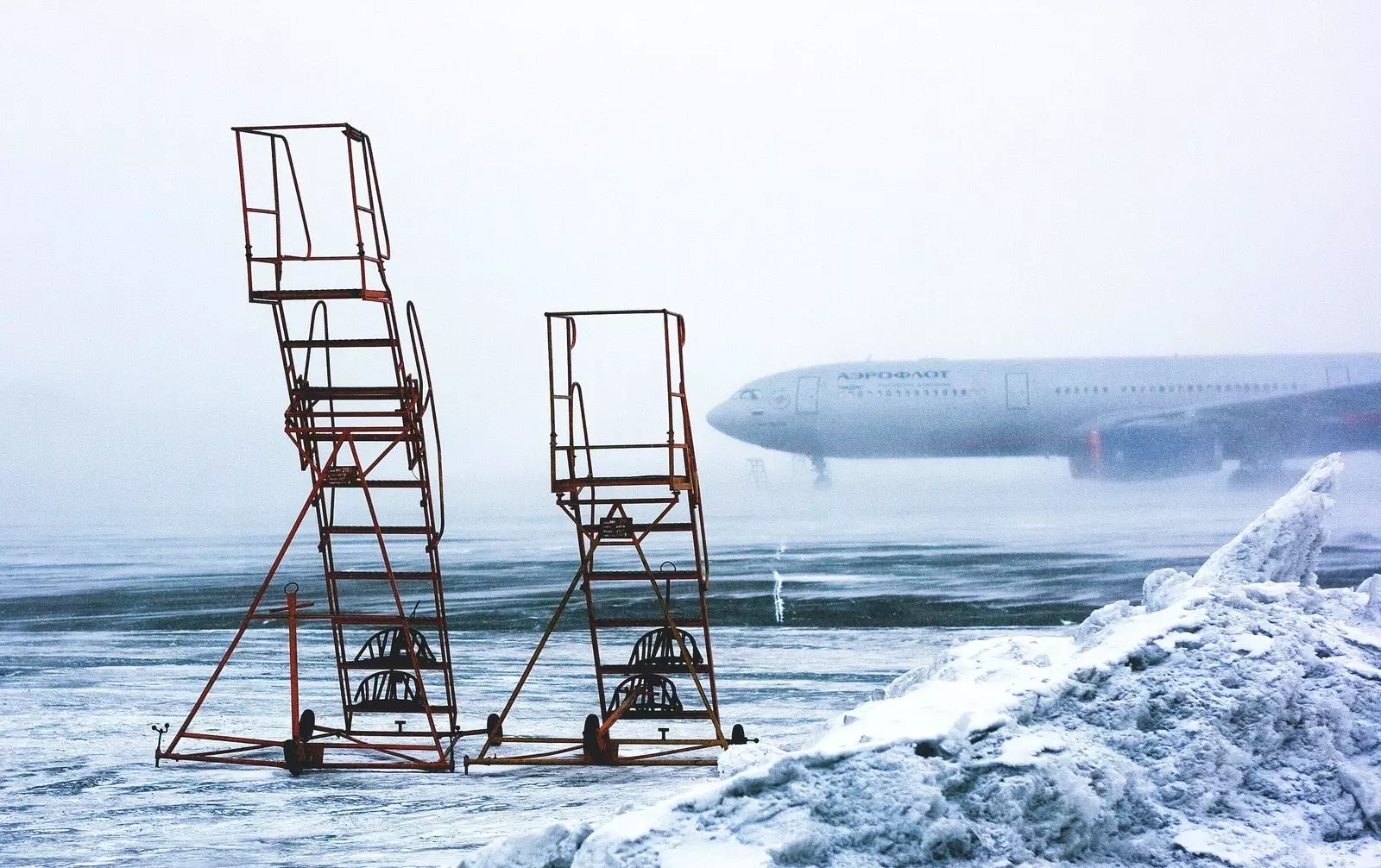
Airplane take off between snow and ice in Elizovo, Russia
Once the snowy and cold weather that has hit the peninsula in recent days, what we are left with now are the beautiful images of Madrid covered in white and a lot of work ahead to get back to normality. The largest snowfall in the capital since 1971, according to the Meteorology Statal Agency , paralyzed the city for several days, forcing roads to be closed, train service to be suspended and even close the Adolfo Suárez Madrid-Barajas Airport.
like his own Minister of Transport, José Luis Ábalos , explained in the midst of the crisis caused by the Filomena storm, “ aeronautical safety requires conditions that are not found on the road, therefore, operations cannot be resumed if there is snow on the margins or the level of friction is not optimal”. But, Is it that planes can't fly if it snows?
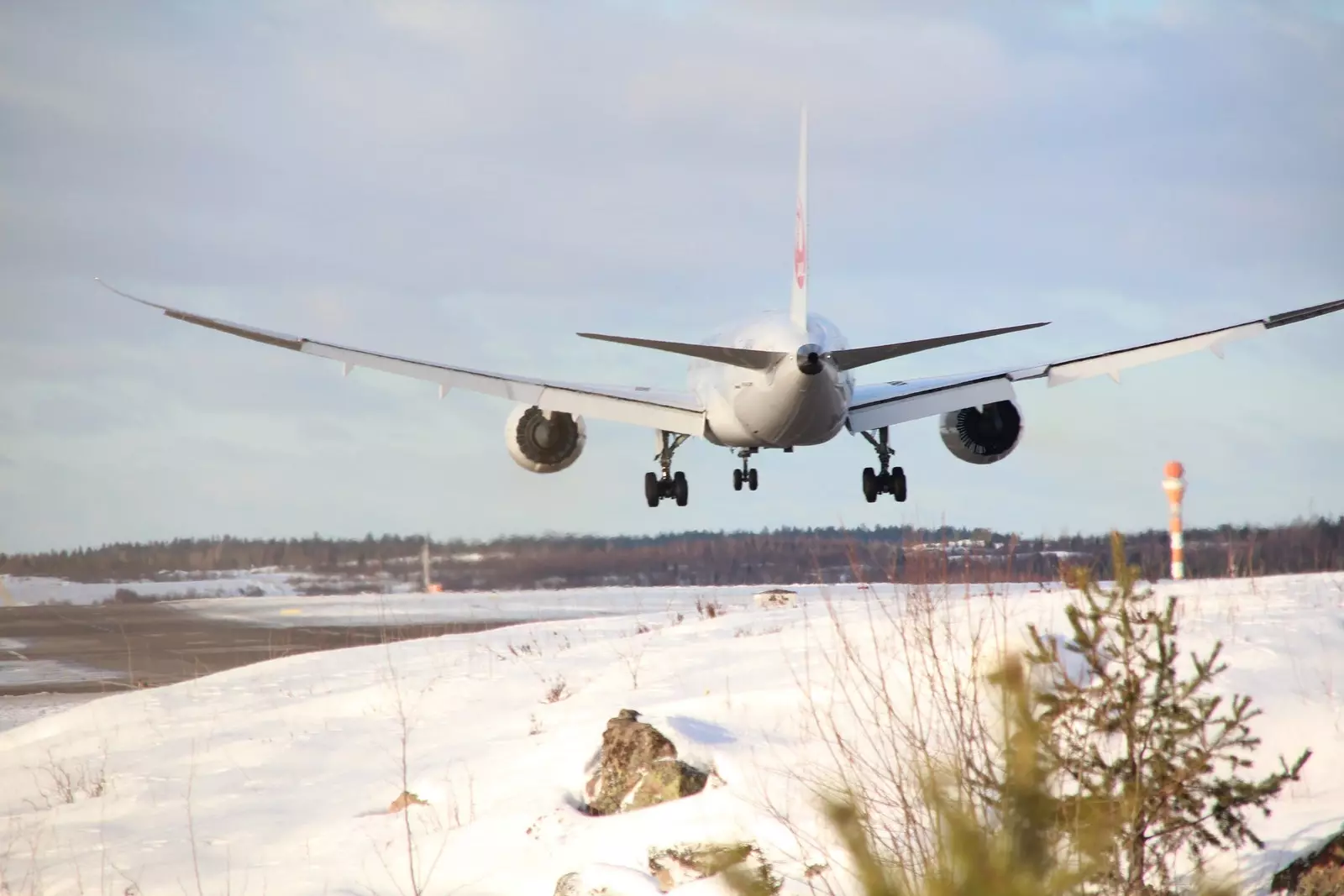
Landing on a snowy day
COME RAIN, SNOW OR SHINE, PLANES FLY
Mikko Välisalo is Finnair's fleet manager , an airline accustomed to dealing with the most extreme weather conditions in a country, Finland , where the snow season is not limited to a storm, but extends throughout 5.6 months on average.
Välisalo starts strong: “ last week we had more than 50 cm of snow at HEL airport and the temperature dropped to -22°C, but our operations continued . During a snowstorm, cars and trains may not move, but the planes keep flying ”. Mikko Välisalo is clear, "winter operations are possible thanks to the smooth cooperation of all stakeholders, such as the airline, ground handling, air traffic control and the airport authority”.
The airline value chain works . And he does it thanks to a common protocol followed by airports in general and airplanes in particular, whether in the face of a snowstorm or a big frost. Finnair's fleet manager says that, as is the case in Spain, "winter operations are integrated into our standard operating procedures from the preparation of the flight until the aircraft is parked after the flight . Although winter conditions are average in Finland, proper training is important for operate aircraft safely in all weather conditions”.
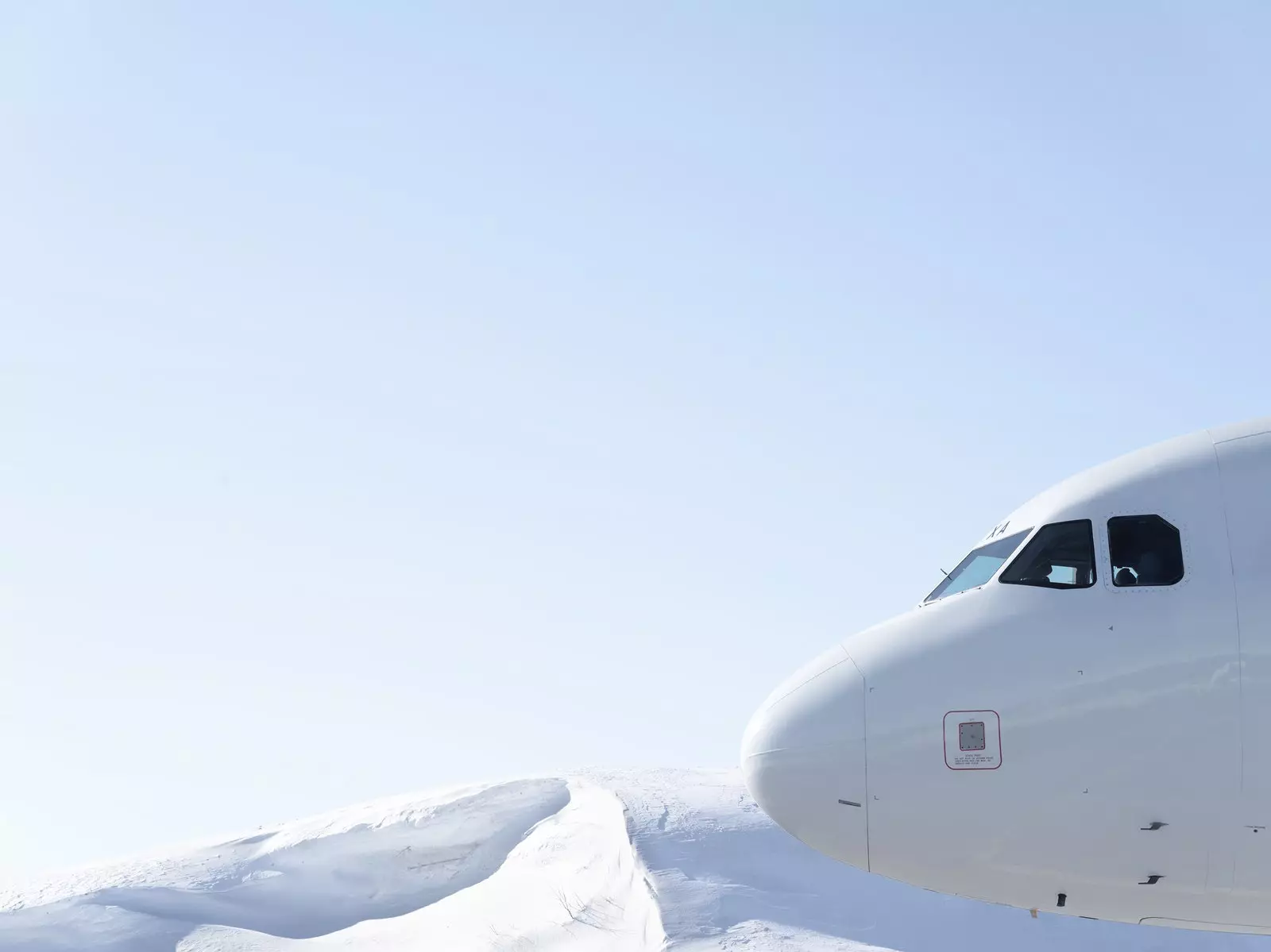
This is how weather conditions affect planes and airports
Alfonso de Bertodanus , do you agree. The Air Europa long-haul commander also states that “ the planes are prepared to fly in rain, snow and ice and do so up to 56°C below zero , so all aircraft are equipped with the relevant systems to carry it out”. Aviation professionals insist that during a blizzard they 'only' have to follow standard operating procedures in the cabin, but what are those all-important processes that allow planes to fly in the middle of a cold snap? For starters, let there be no ice on the wing. “It is the concept of a clean wing, which means that before takeoff all the aerodynamic surfaces are free of contaminants such as snow, ice or frost ”, says Mikko Välisalo. Special attention is also paid to takeoff and landing performance calculations; “ it is important to understand the condition of the track as we use the track compensated system ”, comments the commander of Air Europa. “During the takeoff run, if you get to V1 and for whatever reason you abort the takeoff, you must have enough runway to stop”.
But what if there is ice or snow? Bertodano says that the airport has friction measurement vehicles that run along the runway and “based on this you obtain the coefficient of friction, which is important for manoeuvring. That is the reason why at an airport it is essential to have snow plows and also to throw salt or sand on the runway.”.
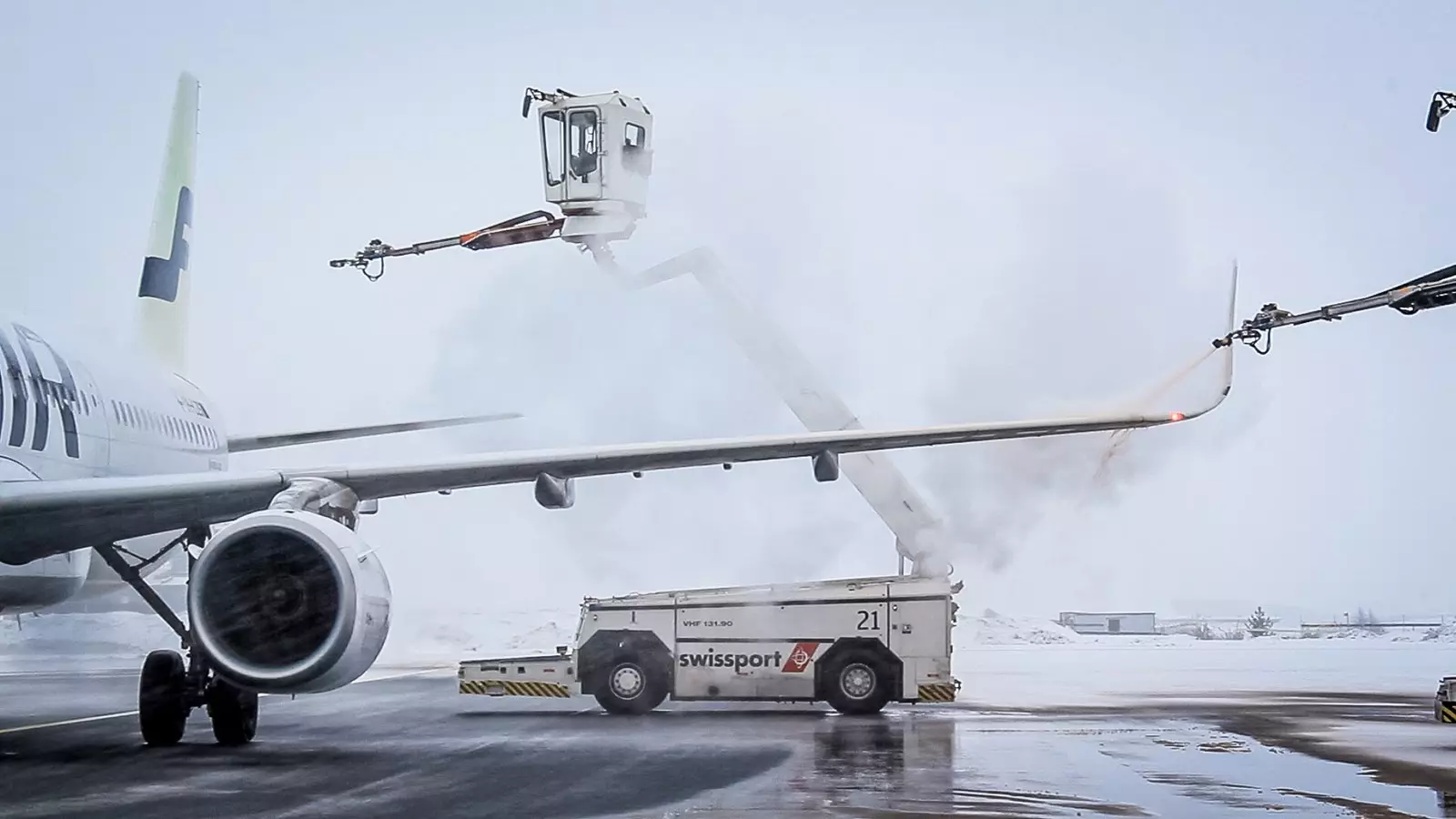
De-icing process
DE-ICING, A GOOD GLYCOL BATH BEFORE FLYING
There have been many unforgettable images these days, but one of the most curious has aroused It has been to see a couple of trucks watering airplanes with a clean hose . This is one of the most fundamental processes, and also the most routine in cold places, and is known as the aircraft de-icing (de-icing).
“Normally, the need for de-icing or anti-icing occurs when the outside air temperature is below +2°C and it is snowing, or if it is not snowing but the outside air temperature is equal to or below 0°C and the humidity relative to the air is between 80-100%”, says Välisalo. “This is because during those weather conditions, frost begins to accumulate on top of airfoils”.
For Alfonso de Bertodano “the main objective in the aircraft de-icing operation is the concept of clean aircraft , Or what is the same, that the airfoils of aircraft are always in the 'summer phase' before take-off ”. The de-icing process is an alcohol bath that prevents freezing, and also cleans the remains of ice, snow or frost deposited on the aerodynamic parts of the plane. “From the moment the aircraft has gone through this process, we have between 45 minutes and an hour to take off. If you have not been able to take off for any reason, you must repeat the process ”, clarifies Bertodano.
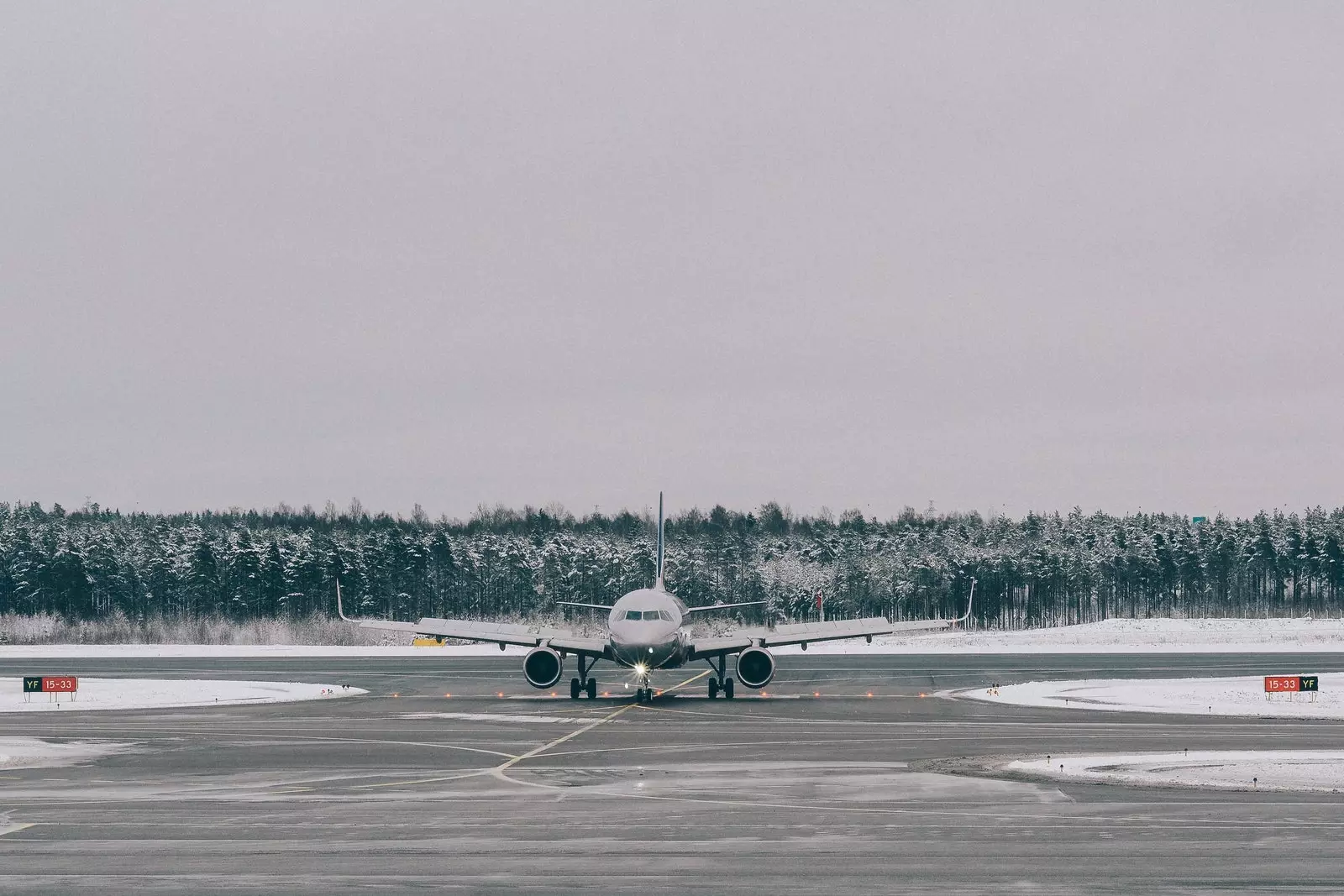
The big challenge: keeping the track clear
THE OPERATION AT THE FOOT OF THE TRACK
And although these winter procedures are standard for pilots and airlines and all, moreover, are trained on simulators , seen the zero rate declared in Barajas during the storm ( which means that no plane could land or take off ), the operation in these circumstances is still complicated.
well you know Hannu Hakkarainen , Helsinki Airport Operations Manager and Finnair Customer Service. “During heavy snowfall, the challenge is keep the platform clear as well as the tracks ”, But he also confirms, proudly, that they have well-functioning processes to manage it. “ We have two centralized de-icing facilities at the end of the taxiways . Additionally we have 16 designated gates in the terminal where de-icing or anti-icing can be performed , and the runways are kept clear by 10 snow plows that clean a track while operations continue on the other two runways.” For Hakkarainen, the key to succeed in a daily winter operation is in the preparation, hence they closely follow the weather forecasts and have even used the “ artificial intelligence to predict disruptions caused by weather”.
Contrary to what happened at Adolfo Suárez Madrid-Barajas Airport, in Helsinki “it is very rare that winter conditions are so harsh that we cannot operate at the airport, says Hakkarainen. “Delays may occur when the platform is slippery and snowy, but helsinki airport has been closed due to weather for only 30 minutes in recent years, this was several years ago ”. A zero rate very short-lived, no doubt.
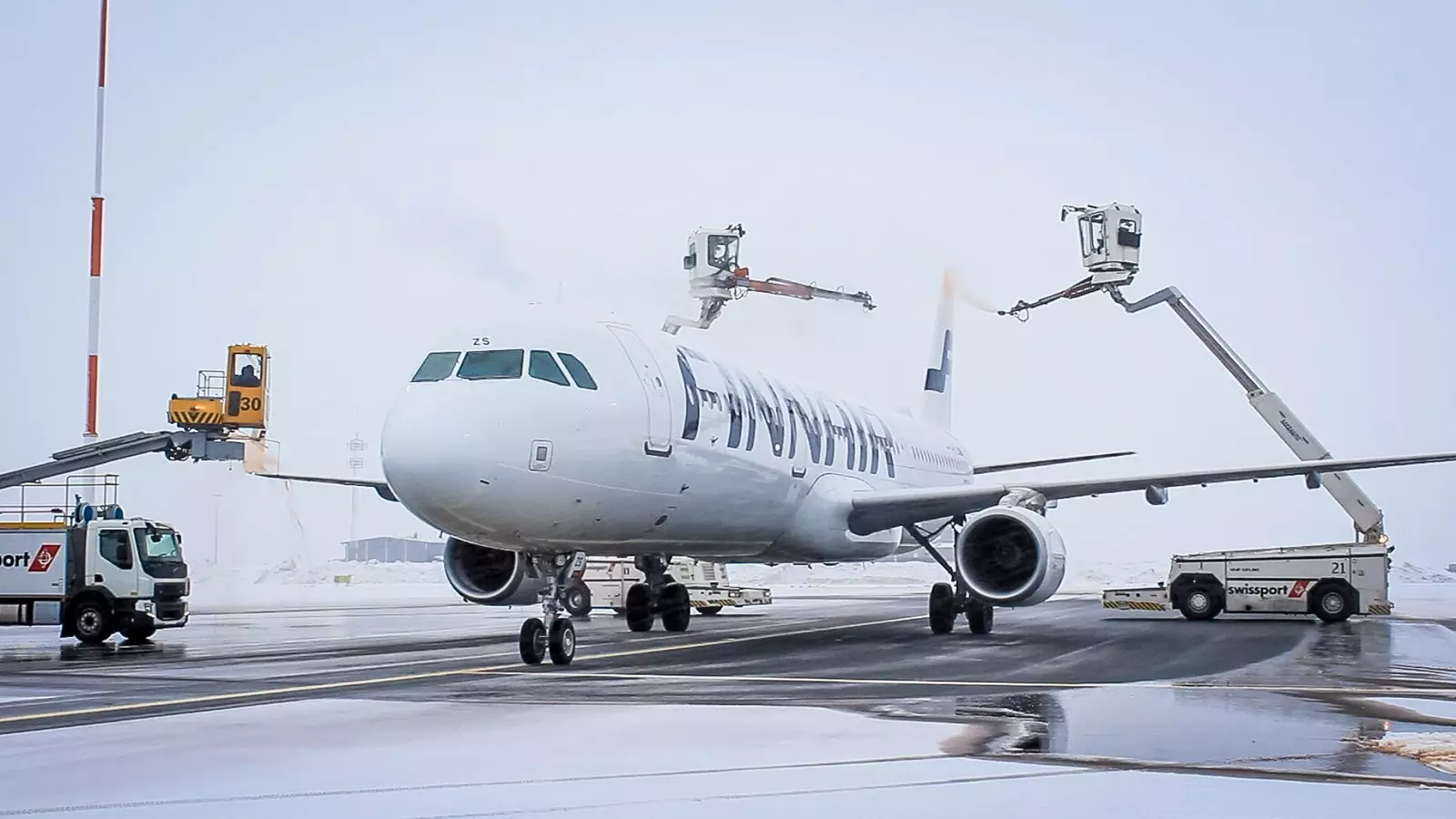
Finnair de-icing process
AND IN THE CONTROL TOWER
Eduardo Carrasco is an air traffic controller, supervisor and instructor, and leads 16 years coordinating planes . The security on land and in the air of millions of passengers a year depends on him and many other colleagues. They are the eyes on the ground of any aerial maneuver worth its salt, with or without snow. “In the situation that we have just experienced, the biggest problem has not come from heaven, since being in time of pandemic few planes fly , the problem has been that many controllers could not access their work station”.
The protocol of the control tower in the event of a bad weather warning is the starting point for launching "a series of procedures that go from the Ministry to Aena, but in our case what it entails is a reduction in capacity , Or what is the same, the number of planes allowed to enter is reduced”.
And despite the fact that the snow forecasts were correct, the reality is that they fell short and in the end it snowed much more than expected, hence although “ planes were tried to fly cleaning everything , the snowfall was so powerful that when you finished cleaning one thing, another was already covered in snow”, recalls Carrasco.
Even so, the zero rate did not last long, but enough to wreak havoc on programming in general and passengers in particular . Meanwhile, the controllers counted on the solidarity of the union itself, helping their colleagues to reach the control tower, as did the Brigade of paratroopers (BRIPAC) that the ministry made available to controllers to access the airport . And no, it was not transporting them by parachute, but in conditioned vehicles. A pity, it would have been the icing on the cake to a perfect storm.
